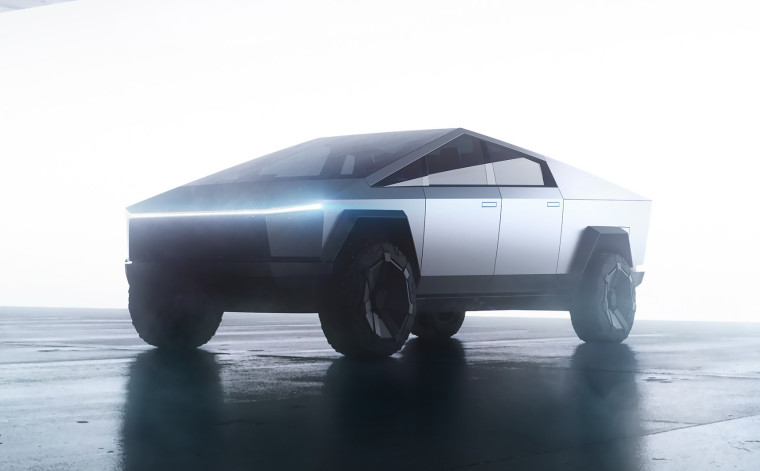
As it is very year, the Consumer Electronics Show, or CES organized in Las Vegas (this runs through till Jan 11), is leading the conversation about the next generation technology, the trends and new launches. This year, there have been important announcements about artificial intelligence (AI) models led by Nvidia’s Cosmos world foundation models, TVs with a thicker layer of AI, new computing devices that push the case for the AI PC and Intel, Qualcomm as well as AMD lining up their new chip generation which hopes to make a case for newer form factors. AI PCs write a new chapter The cause of the AI PC, or a Copilot Plus PC if you’d like to call it that, remains very much in focus.
HP’s impressive width of the 2025 “next-gen AI PC” line-up includes the EliteBook Ultra G1i, EliteBook X Flip G1i but it is the AMD Ryzen powered HP Z2 Mini G1a mini workstation that perhaps represents the biggest forward leap. The ZE Mini G1a is powered by an AMD Ryzen AI Max PRO processor, with scalable 128GB of innovative unified memory architecture that can allocate up to 96 GB exclusively for the GPU. This potentially gives it the sort of performance for graphics-intensive workflows, that similar form factors haven’t been able to achieve till now (barring perhaps the Apple Mac Mini, in some configurations).

“With an internal power supply, this PC cleanly fits on a desk, mounted behind a monitor, or attached under a desk. It also easily fits in a rack, and its small size allows for a high-density rack mount solution that combines performance, manageability, and security,” the company says, in a statement. PC makers aren’t relying on just Microsoft’s AI push to thicken that envelope.
HP’s AI Companion, incudes a chatbot and can summarize documents. Samsung’s Galaxy AI toolkit, which includes AI search and photo remastering, is very much a part of their new Galaxy Book5 lineup. “We are delivering an AI experience on Galaxy Book that empowers users to work, create and connect in more intelligent ways through our growing ecosystem,” notes Changtae Kim, EVP & Head of New Computing R&D Team, Mobile Experience Business at Samsung Electronics.
Dell will have their first ever commercial PCs powered by AMD chips, part of a broader rebranding which says adios to the XPS and Latitude monikers. AMD would hope for a stronger foothold in the commercial PC space where its traditionally lagged, while Dell would believe the rebranding reverses less than impressive personal PC sales over the years. The biggest boost to AI PCs perhaps arrives this summer, when Nvidia’s Project Digits “AI personal supercomputer” concept becomes a reality—powered by Grace Blackwell Superchip and an ability to run models of up to 200 billion parameters, with prices expected around $3000.
Nvidia’s AI models thinking like humans Nvidia has unlocked a first look at Cosmos, which it says is “the world’s first world foundation model.” Quite what is a world foundation model? The simple explanation is, it basically defines AI models that try to imbibe how humans make mental models of the world around them, to similarly predict and generate “physics-aware” videos. “The ChatGPT moment for robotics is coming.
Like large language models, world foundation models are fundamental to advancing robot and AV development, yet not all developers have the expertise and resources to train their own. We created Cosmos to democratize physical AI and put general robotics in reach of every developer,” Jensen Huang, founder and CEO of NVIDIA, said during the keynote. In fact, developers can already access Cosmos Nano, Super and Ultra models.
Multiple models in play, ranging in size from 4 billion to 14 billion parameters. Robotics and autonomous motoring are seen as the core areas of relevance. Robotics and automotive companies including 1X, Agile Robots, Agility, Figure AI, Foretellix, Fourier, Neura Robotics, Skild AI, Virtual Incision, Uber and XPENG, are already on board for finding relevance with Cosmos.
TVs going overboard with AI? AI in phones, AI in PCs and now, AI in TVs. The way things are, Samsung and LG may risk going overboard in this mission. AI’s scope is going beyond picture processing, resolution upscaling and an illusion of surround sound.
LG’s 2025 OLED TVs bring an ‘AI remote’ which can understand individual voices for customized content recommendations, a chatbot for searching content and even Microsoft Copilot integrated for good measure. Samsung’s 2025 TVs have Vision AI, including something called Click to Search (a smart spin-off from Circle to Search on phones) to identify places, products and more on screen. There’s a food identification mode to generate recipes in case you’re in the mood to experiment with cooking, live translate and generative wallpapers.
Remember Bixby? The voice assistant gets large language model smarts. Quite how this vision pans out, remains to be seen. Dolby Audio has competition It is finally happening, two years after Samsung first detailed it.
The company’s 2025 TVs are adding support for an audio format called Eclipsa Audio, which is positioned as a competitor to Dolby’s Atmos format for 3D sound technology. The open-source nature of this format is expected to help push interest—unlike Dolby Atmos which requires TV makers to pay a license fee, a free-to-use Eclipsa will be comparatively more cost effective. Too soon to predict when it’ll gain widespread adoption.
AI and motoring, speeding along Nvidia and Toyota are working to integrate automated driving capabilities to a new fleet of the latter’s vehicles, with Nvidia’s Drive AGX Orin supercomputer and DriveOS providing the foundation. On a lighter note, Toyota Chairman Akio Toyoda said during his keynote speech that “the future of mobility shouldn’t be limited to just Earth, or just one car company”. One could argue that it was a reference to Elon Musk, but more to the point, this signals the Japanese automaker’s investments in Interstellar Technologies, a private Japanese spaceflight company.
The aim is to leverage Toyota’s manufacturing scale, to mass produce rockets. Hyundai Motor Company’s innovation platforms ZER01NE and CRADLE have announced new collaborations with global startups, with focus on autonomous mobility, AI and robotics innovation. “Through these collaborations, Hyundai Motor Group is expanding its open innovation initiatives and contributing to the development of a sustainable mobility value chain focused on human-centric innovation,” notes Kyuseung Noh, Head of the ZER01NE Group, in a statement.
An example is The Smart Tire Company developing the world’s first high-performance, fuel-efficient, airless tire made from shape memory alloy (NiTinol). Qualcomm announced a slew of partnerships with automakers including Indian brand Mahindra, with generative AI as the key component. There is confirmation that Mahindra’s BE 6 and XEV 9e electric vehicles, are powered by the Snapdragon Digital Chassis and Snapdragon Cockpit Platform.
“Powered by our Mahindra Artificial Intelligence Architecture, these vehicles offer a personalized driving experience that is both state-of-the-art and accessible to all,” notes R Velusamy, President - Automotive Product Development, Mahindra & Mahindra Ltd., in a statement. Qualcomm is also working with Hyundai to develop the next-generation advanced driver assistance systems (ADAS) and digital cockpit systems.
Chips for your next computer Ultraportables and small form factors may well define a lot of the computing we do in the coming years, where traditional desktop or mobile focused chips may be an uneasy fit. Qualcomm’s played its cards by expanding an impressive Snapdragon X portfolio, that already has the Snapdragon X Elite and Snapdragon X Plus chips. Now, the entry-spec Snapdragon X is expected to spawn a new line of $600 (around ₹ 50,000) Qualcomm-powered laptops, as well as the first of their kind mini desktop PCs.
HP, Asus and Acer are already on board. Intel needs 2025 to go well for them, and for now, hopes are resting on the Core Ultra (Series 2) chips. The stumbling tech giant would hope the pitch of “over 400 AI features” would convince PC makers, at a time when competition from Qualcomm and AMD is tougher than ever.
Speaking of whom, AMD has left no cards on the table after announcing the AI focused Ryzen 9 9950X3D chip for powerful PCs, the Ryzen AI 300 series and Ryzen AI Max series for AI PCs, while the Ryzen Z2 Go and Ryzen Z2 Extreme will push the cause for handheld form factors such as an Asus ROG Ally..















